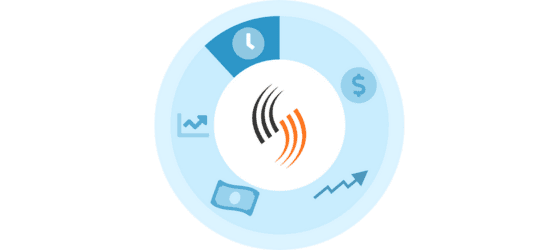Strategic workforce planning in healthcare is more crucial now more than ever. We’ve spoken a lot about Workforce Planning in our previous blog post here. You can check that blog post out to learn all about what workforce planning is and why it’s important.

What is workforce Planning?
To summarise, workforce planning is a workforce management strategy that businesses deploy in order to get the right people with the right skills in the right place at the right time! This blog post is going to dive into strategic workforce planning with a particular focus on healthcare.
Benefits of Strategic Workforce Planning in Healthcare
Firstly, Strategic Workforce Planning has many benefits such as:
- Reduced labor costs: strategic workforce planning in healthcare means that you are using the right number of staff per shift, while providing the highest quality of care. When managed correctly, it can reduce overtime, which will drastically reduce overall labor costs.
- Improves employee retention and recruitment: Unfortunately, employee burnout is very common in healthcare settings. When your workforce is planned strategically, the rate of burnout also reduces. This means that employees are happier in their work and less likely to leave. It also allows you to attract and retain top talent by showing them that you care about their wellbeing.
- Gives organizations the ability to respond to customer needs as they change over time: just like any other business, in healthcare, the patient/customer should always be the first priority. When your workforce is planned and managed strategically, you are more prepared to cater to the changing needs of your clients.
- Organizations can identify inefficiencies in processes: Often, once an organization starts prioritising workforce planning, they identify a wide range of inefficiencies. These inefficiencies are often overlooked as an organization grows, and the gap between management and employees grows. Identifying these inefficiencies is the first step to resolving them, and creating a more agile organization.
- Helpful for determining strategies for people development: strategic workforce planning is a great way to identify opportunities to improve and develop your workforce.
Why is Strategic Workforce Planning in Healthcare Necessary?

Workforce planning is vital for all industries but especially in the healthcare industry because of the larger amount of different professions, necessary skills, varying shift patterns, and the range of healthcare services provided. Demand on the healthcare system has never been higher and so workforce planning is an important part of strategic planning for organizations.
The healthcare industry is also unique in that the risk of poor workforce planning is high, as people’s lives are at risk.
Training and Development times
Training and development in the healthcare industry vary a lot between workforces. It can often take a large amount of time to fully train a skilled healthcare worker. This results in systemic delays. For example, in the US, it takes 10-14 years to fully train a doctor. In this time, a lot can change!
Patients’ needs can change by the time it takes a healthcare worker to get fully trained. As well as that, the speed of technological advances means that the workforce may require changes or different skills. The healthcare industry has come to expect the unexpected, especially with the pandemic. This is why proper workforce planning and forecasting are vital for the healthcare industry.
Demand and supply of healthcare
Every patient is different and they all require a different type of care. For example, some patients need complex treatments by specialists, so matching a patient’s demand with the supply of service can be difficult.
How can you ensure that each and every patient gets matched with a service to meet their needs? This is extremely difficult to forecast and is a complex issue. Failure to effectively plan your workforce will lead to an oversupply or shortage of healthcare workers. This means either wasted money or poor service for patients which can be detrimental.
As well as that, employees will be overworked if the demand for services surpasses the supply of them. Consequently, costing you money and more importantly, puts your patients at risk and your employees at risk of burnout.
To reduce costs
Effective workforce planning is vital to ensure patients’ needs are being met. Additionally, so the standard of care is high while keeping costs low. As mentioned, ineffective workforce planning in the healthcare industry means you can encounter an oversupply of staff. This results in spending money on unnecessary costs. These resources are being wasted where they could have been used in another area of the business.

McMaster Health Forum’s “Exploring Models for Health Workforce Planning” details how there is no single way to allocate healthcare, as many different combinations of providers can deliver needed services. Here are some ways you can implement strategic workforce planning to ensure patients get the best care required!
How do you start strategic workforce planning?
Analyze
The first step is assessing your current workforce, this will help you plan for the coming years. You should analyze data available to you such as your staff retention and hiring rates. This gives you an idea of how long your workers are staying with the organization and will help you plan for future required recruitment drives!
This is also a great way to talk to your staff and ask them what resources they think they need. Managers/supervisors will be able to tell you if they are understaffed or require people with different qualifications etc.
As mentioned, technological advances will impact your workforce planning as technology can replace the need for certain workers. Keep an eye on these technological advances and assess whether you need to implement changes to the workforce.
Start your Workforce Planning
Once you have assessed and analyzed your workforce you can start the planning stage. You may need a dedicated planner to do this but having someone in place will ensure you don’t encounter staffing issues. Look at the gaps in the organization and determine whether they need to be filled or not? Can you fill the gap with temporary workers?
Focus on the most urgent gaps first to ensure patients’ needs are met. Workforce demand will be dependent on current workforce numbers, employee turnover rate, and training times. You need to have a recruitment budget in mind while you are doing so as well.
Employee Scheduling

Manually scheduling your workforce can be a laborious task so you should look into employee scheduling software to do this for you. One of the perks of scheduling software like Celayix is self-scheduling. This allows your workers to schedule their own shifts through an app. You simply post the open shifts and your workers will pick up the shifts that suit them. It’s important in the healthcare industry to ensure your workers have the correct training and skill so you can use rules to make sure only qualified people can schedule certain shifts. This not only helps with workforce planning, but it contributes to a healthy work-life balance for your workers.
Staff Retention
A really important part of your healthcare workforce planning is your employee retention. Good employee retention means you will have fewer gaps and less need to recruit new workers. This saves you time and resources and will not impact patient care.
As well as that, hiring managers should have practices in place for attracting talent and keeping them within the organization.
To summarize, workforce planning in the healthcare industry is difficult but there are steps you can take to prepare your organization. Workforce planning is an integral part of an organization’s overall strategy. It is key to ensure your patients are getting the best care possible. If you’re interested in Celayix as an addition to your workforce planning tools, reach out to see a free live demo today!





